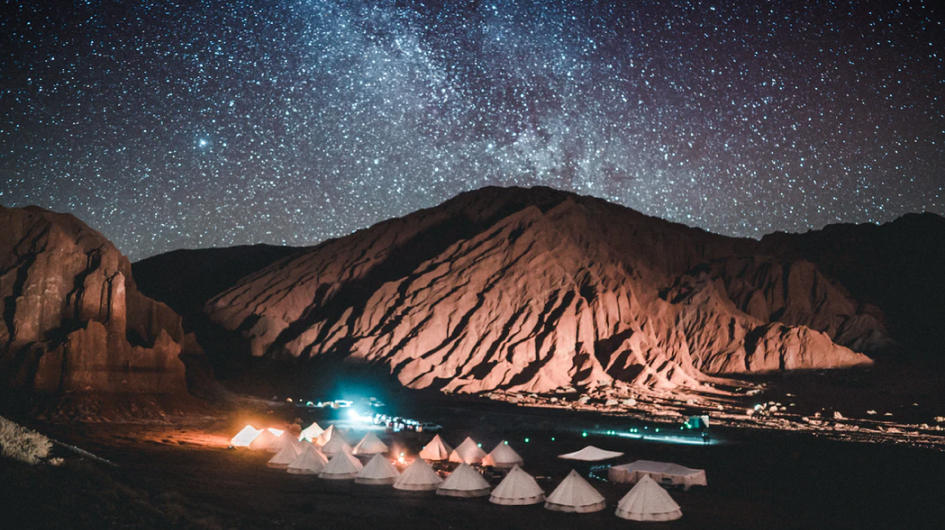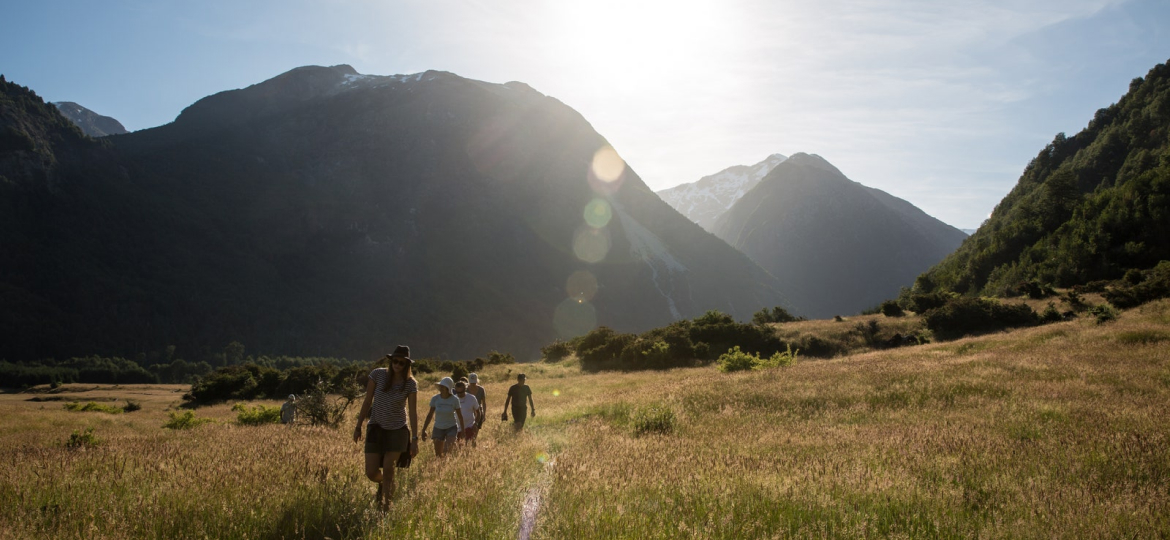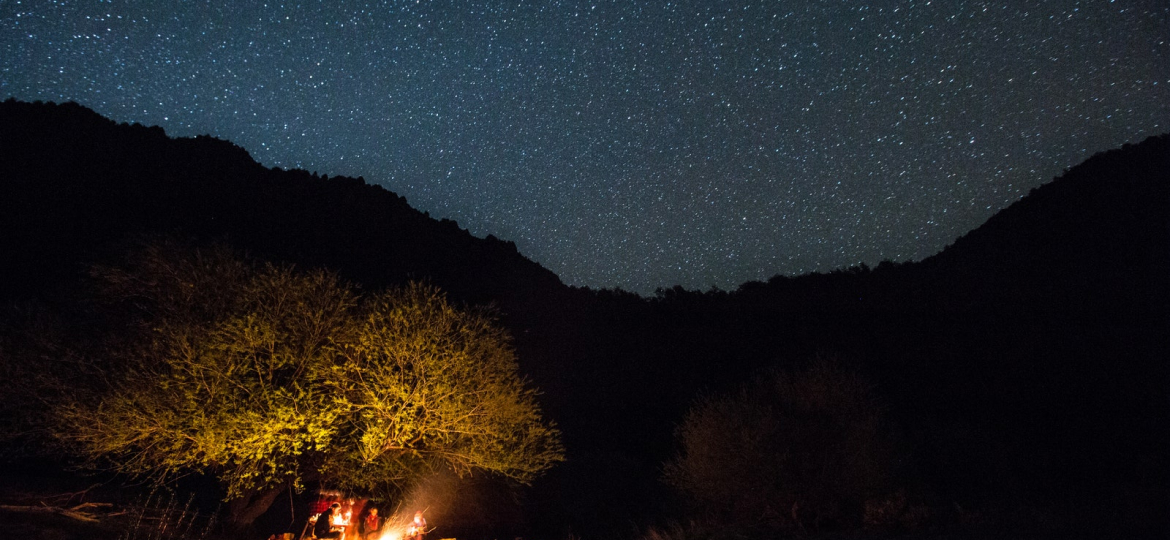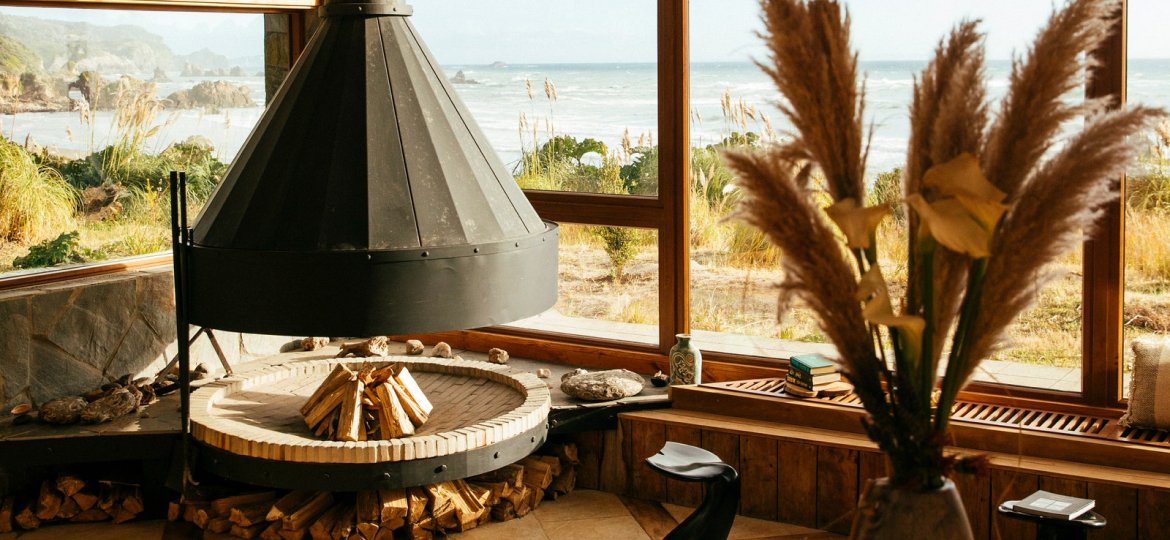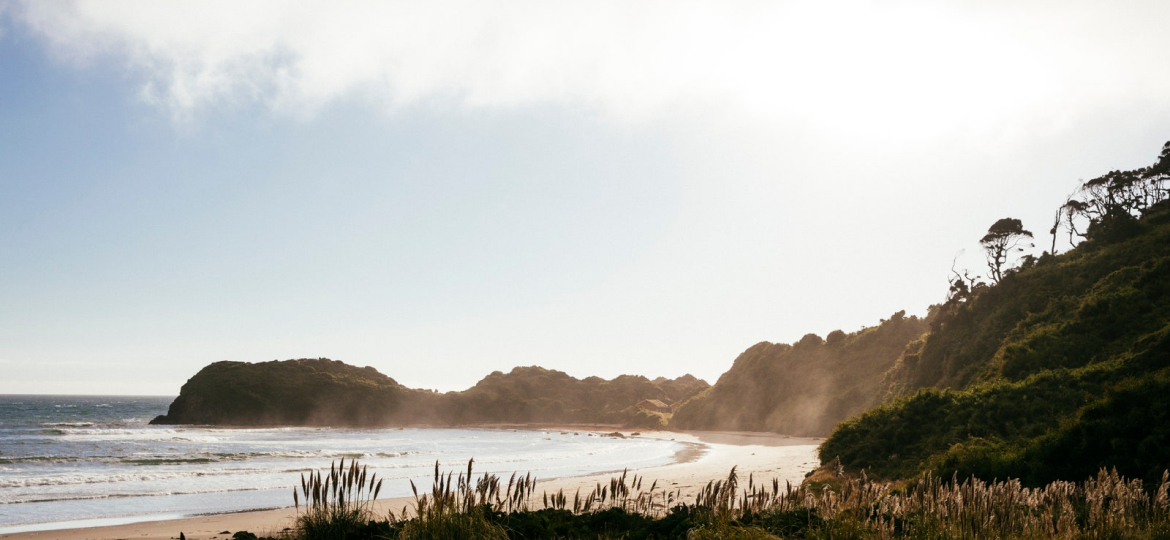
or you can try with these popular searches:
The Tempestuous Magic of Chilean Patagonia

For Condé Nast Traveler's Iconic Itineraries, we partner with our travel specialists to create classic trips through our favorite destinations that showcase the difference it makes to travel with the help of an expert.
For the past hour, rain has been pounding relentlessly against my face with a force so aggressive it feels personal. The wind is howling at the pitch of a kettle boiling. Lightning flashes above the Pacific Ocean. The conditions aren’t what you’d picture when dreaming of horseback riding on the beach—and yet here I am, sodden through and giddy, trying to get my horse, Palta, to walk farther into the storm.
This is Chilean Patagonia, tempestuous and unpredictable. I am in its northernmost region, where thick forests cluster like cities around glassy lakes and the Andes dissolve into the sea. It’s a landscape that leaves me breathless, perhaps most of all for its exquisite emptiness.
The extreme conditions of this little pocket of the Pacific coastline have made it a major adventure destination for decades, despite its being a headache to reach. I’d arrived in Chile seven days prior following a 24-hour journey from my home in Brooklyn that consisted of one Uber ride, three commercial flights, one transfer on a 10-seater propeller plane, and a three-hour drive along winding, unsurfaced roads to the first of my two destinations: Pata Lodge, a small, sustainably minded farm and hotel near the mountain town of Futaleufú.
The pair of invisible hands ushering me there belonged to Plan South America, a specialist travel company run by Harry Hastings that focuses on Latin America and Antarctica. Hastings has spent the best part of 20 years knocking around South America, and his love and respect for the continent are evident in his itineraries: Guides and on-the-ground contacts are hand-selected and local; properties are places that don’t automatically populate on your Google map; and the twin pillars of community and conservation inform the route. We started to plan my trip just as Chile reopened to visitors in early 2022—a double-edged sword, given that it became quickly apparent that I wasn’t the only person yearning to escape to Patagonia. (“Travel has finally exploded,” Hastings enthused to me.) With this in mind, Hastings insisted that I diverge from the most popular parts of Patagonia—Torres del Paine, for example—and set my sights on somewhere like Futaleufú: a virtually inaccessible kayaking and rafting playground that is, he promised, still not even on most Chileans’ radars. I needed someone like Hastings and his concierge team—who, in the weeks running up to my departure, weighed in on everything from COVID-19 bureaucracy to packing lists to an agonizing decision between fly-fishing and a boat ride—to help me unearth the truly extraordinary.
Pata Lodge, where I spend my first three nights, is one of those extraordinary places. Run by Brazilian photographer representative Marcelo Schaffer and his partners Henry Ajl, Alan Zekcer, and Markus Bruno, the property lies within a foggy valley in the Chilean Lake District near the Argentine border. To get there from Chaitén, the closest domestic airport, you drive through centuries-old forests buttressed by glacial peaks and crisscross over fjords before reaching the Futaleufú River, which empties into the Yelcho Lake, making it a prime spot for whitewater rafting. The weather-beaten signs along the roadside advertising water sports and kayaks are the only visible evidence of the robust outdoors industry. An hour in, my driver, Efraim, and his wife, Anna, insist we stop at a small café for piping-hot empanadas packed with minced beef and egg. I fish out a handful of pesos to pay, but he waves me away with a grin: “You are my guest here.”
I arrive at night with the expectation that I’ll just shower and collapse into bed in my cabin, where a wood-fire stove has already been lit in anticipation of my arrival. But Schaffer thrusts a glass of Chilean red into my hand as his two dogs, Poncho and Balu, circle our feet inquisitively. Before I know it, I am seated at dinner with his family, Ajl, and a Brazilian couple enjoying their final evening. We’re fed bitter greens from the farm and creamy risotto topped with morel mushrooms picked in the forest earlier that day. It feels like a night spent with old friends. After fumbling my way back to my cabin in the dark—to save energy and allow guests to better see the stars, there is no outdoor lighting—I roll into bed full and happy.
Pata sits on a sprawling piece of land populated by six cabins and a main lodge, as well as congregations of apple trees, a lake where guests can kayak or swim, and a series of gentle trails that knit together within the farm’s private forest. Driven by his passion for the land he calls home, Schaffer likes to take guests hiking. One morning we set off straight after breakfast, fueled by black coffee and buttered toast smothered with homemade raspberry jam, so that I can experience one of his favorite trails.
The walk comically encapsulates all of Patagonia’s famously temperamental weather: It features sunshine, wind, rain, and sleet before finally settling on a light mist. Schaffer, who is in his 40s and clad in a worn-in Patagonia fleece and a faded Radiohead T-shirt, points out constellations of seasonal mushrooms popping out of the ground—some which may be picked, others avoided—and identifies the birds darting among the trees. He tells me about his decision to leave São Paulo in search of a slower, more meaningful life here—one that involves living off the land, disconnecting from technology, and building a deeper understanding of the natural environment. “Everything is connected and must be cared for,” he says. He also shares his love of astronomy, Eddie Vedder, and Japanese culture, and speaks passionately about the activities he and his co-owners have set up at Pata in collaboration with local vendors, including beekeeping, yoga, fly-fishing, and an annual outdoor film festival. His pockets, I notice, are filled with trash, the by-product of his almost obsessive need to look after this land.
Then the trees part, revealing the Futaleufú river. It contains some of the cleanest water in the world and also some of the bluest. We stop to skip stones, much like I used to do with my grandparents in the mountains of Wales—a place with a surprisingly deep connection to Patagonia due to numerous Welsh immigrants who relocated to the region in the late 19th century. It’s late April—fall in Chile, the end of the high season—and already the trees are turning magnificent shades of gold, apricot, and crimson. Looking up, I notice the first snowfall dusting the Andes. The air is so fresh I want to bottle it.
Hastings insists I go farther west to the coast—300 miles away from my current location—in time for lunch, and so I leave Pata when there’s still dew on the ground. He’s arranged for me to be picked up by helicopter back in Puerto Montt, the closest city, and flown to Mari Mari Natural Reserve Experience, a lush private eco-reserve along 13 miles of Pacific shore. The coastline here is a contrast from Argentine Patagonia thanks to the way the Andes meet the ocean to form archipelagos just offshore. Anthony Bourdain once visited, yet Mari Mari remains miraculously word-of-mouth. Hastings, it seems, has let me in on a secret.
Arriving anywhere by helicopter feels pretty unreal, but this experience is like something ripped from Jurassic Park. My pilot, Rodrigo Noriega, swoops low alongside mossy cliff tops before swerving outward over the choppy water to give me a better view of the jagged islands where penguins and sea lions like to group together. The sky is a swirling gray, the frothing ocean the color of steel. Before being hired by Mari Mari, Noriega worked as a pilot for Douglas Tompkins—the late American outdoorsman, North Face founder, and conservationist who helped create many of Argentina’s and Chile’s national parks—so he is intimately familiar with this landscape, but the novelty of the landing still hasn’t worn off. How could it? As we descend toward the beach, it’s like arriving at the edge of the world.
Mari Mari’s 9,000 acres of forest contain a rich ecosystem of wildlife. Guests are regularly taken bird-watching and out to sea to catch sight of penguin colonies and schools of dolphins, as well as blue and humpback whales following their migratory lane, which passes through this sliver of the Pacific. Saltwater fishing and surf fishing are also options. The weather, however, is inhospitable, making it impossible to safely do anything involving the ocean. But I have learned by now that the key to experiencing Patagonia at its fullest is to adapt to it, and so I join my guide, Cristina Riquelme, and set off on a blustery hike instead—the first of several unforgettable walks we will take together.
There is something about this part of Chile that hooks people and won’t let them go. Like Schaffer, Riquelme, 40, left her job (she was a graphic designer in Santiago) for a change of pace that turned permanent. As we snake our way through the forest, she educates me about the native flora and fauna, enlisting me to help her identify tree types, and spooks me with stories of witchcraft on the nearby archipelago of Chiloé. She pauses near an assortment of fungi: a red-and-white-speckled toadstool called Amanita muscaria (fly amanita); the small, domed Mycena haematopus (bleeding fairy helmet); and the voluminous Ganoderma australe (southern bracket), which resembles a slumping tiramisu at the end of a dinner party. We stop to listen to an owl hooting over the patter of the rain, and later we’re forced to wade through a river that has jumped its banks, the cold, muddy water reaching above our knees as we hold hands so neither of us slips. I expect the reward at the end to be the steam room back at the main lodge, but it turns out to be something simpler: the sight of a solitary otter diving for its dinner near the beach.
By the time I persuade Cristina and Marco Ríos, Mari Mari’s veterinarian and stable manager, to take me horseback riding on my final morning, the late-autumn weather has become almost storybook in its drama. We saddle up our horses at the stables, wind screeching, and I get to know Palta (meaning “avocado” in Chilean Spanish), the relatively young Chilean Criollo horse whom Ríos has matched with me. I run my hand across his side and can feel that he has already started growing his thick winter coat in preparation for the frigid months ahead.
Setting off up the trail, I feel overly confident in my horse-riding skills, assuming that the childhood lessons I took in the English countryside are enough for me to steer Palta along the cliffs and down onto the beach. But this, of course, is not southern England, and I quickly realize that no amount of whooping or nudging or, admittedly, pleading with this horse will persuade him to move. Thankfully, Ríos has a horse-whisperer quality (which also helps calm humans). Slowly but surely, we inch our way down the steep trail until horses’ hooves are kicking up sand. I’m soaked through and breathless after zigzagging across the deep streams splicing through the sand dunes, but Ríos talks me out of booking it back to the stables. Instead, we turn to face the raging ocean. Far off in the distance, a ray of sunlight breaks through the clouds.
